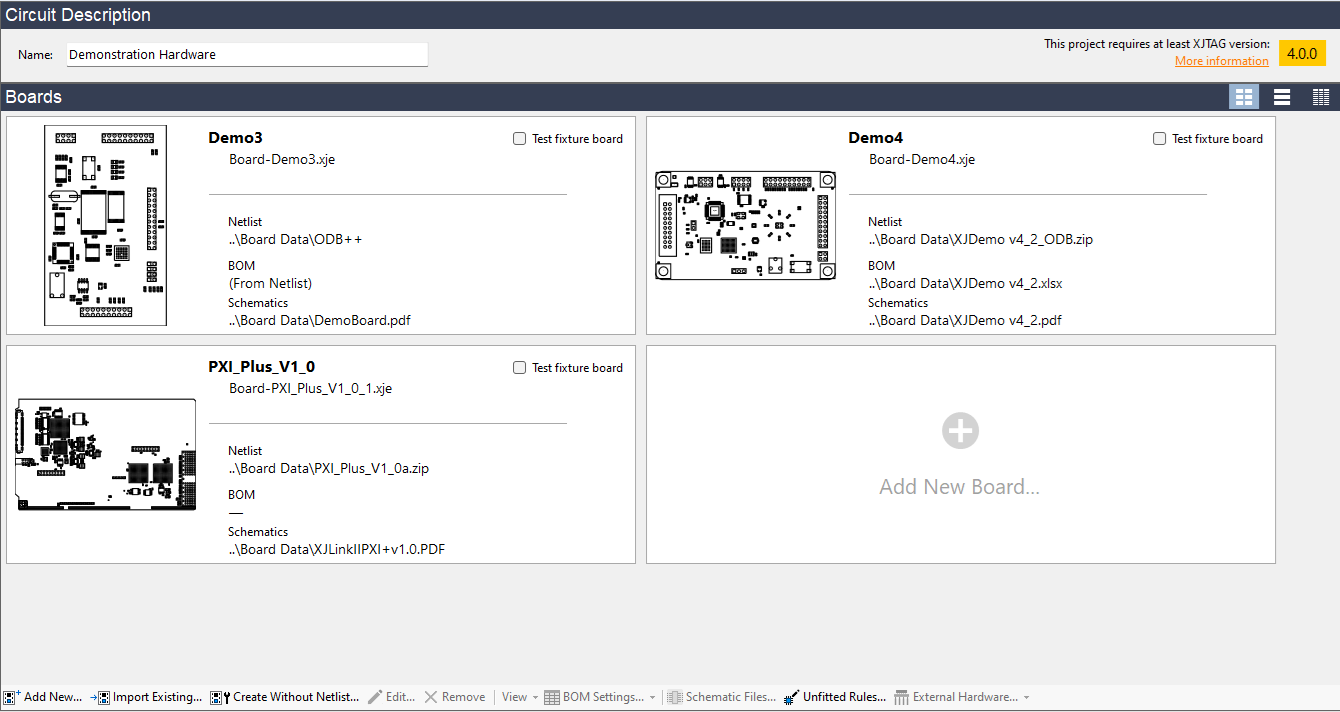(This updates an older article due to the addition of the Excluded category in XJTAG 3.12)
One of the questions we are commonly asked by new users, and also by users who have not used XJTAG for a while and are coming back to it, is about the differences between device categorisations in XJDeveloper.
Uncategorised: When a device is uncategorised, the nets connected to that device will not be included in the automatically-generated tests (Connection Test), even if the test system has access to drive them. The Connection Test will only drive a net if it knows about everything on the net and therefore knows that it is safe to drive. (XJEase tests however may be configured to drive these nets anyway!) DFT reports will show the pins as untested and at the top of the DFT screen there will be a header prompting you to categorise the remaining uncategorised devices.
Ignored: A device categorised as Ignored may be connected to test-accessible nets, but there is nothing that can be done using a device file to improve the test coverage above the coverage achieved by the automatic Connection Test. In order for this to be true it must be guaranteed that the ‘Ignored’ device will not interfere with the Connection Test, i.e. the device will not drive the nets which are test-accessible and therefore the Connection Test can ignore that component to drive the net anyway. Typical components to be placed in the Ignored category are connectors, ESD diodes, and capacitors, but often the use of a Constant Pin to disable a more complex device means that it can be then marked as Ignored. Running a DFT report will include test coverage for the ignored devices, and that test coverage will be gained by running the Connection Test.
Unfitted: The difference between Ignored and Unfitted is that any component categorised as Unfitted is removed from the DFT figures. The most common things to put in the Unfitted category are test points, but most board designs have some unfitted or optionally-fitted parts. From an analysis point of view, test points (and other unfitted devices) reduce the calculated test coverage percentages because they are effectively pins that cannot be tested for open circuits, and so removing unfitted devices from the DFT statistics is the best representation of the testability of the circuit design.
Excluded: Very similar to Uncategorised – but you will not get the warnings displayed in Connection Test and in the Test Coverage screen about uncategorised devices, and XJDeveloper will no longer prompt you to categorise the devices. This category is for devices which it has been determined are likely to interfere with the operation of XJTAG’s tests, and that cannot be controlled to prevent this interference. The system will then understand that it is not safe to drive nets attached to these devices in Connection Test, though in XJEase you may drive the nets at your own risk.
If the device can have its outputs controlled or disabled, it may be better to assign the device as a Test device and set disable values on appropriate pins.
Another way to look at the Excluded category is that it allows you to “complete” your project setup (no uncategorised devices)… however it does so at the expense of a reduction in test coverage and so you should aim to use this category as little as possible.
In summary:
| Categorisation | Nets connected | DFT analysis |
| Uncategorised | Will not be driven/tested | Marked as untested |
| Excluded | Will not be driven/tested | Marked as untested |
| Ignored | Can be driven | Test coverage from Connection Test |
| Unfitted | Can be driven | Excluded from statistics |


Leave A Comment